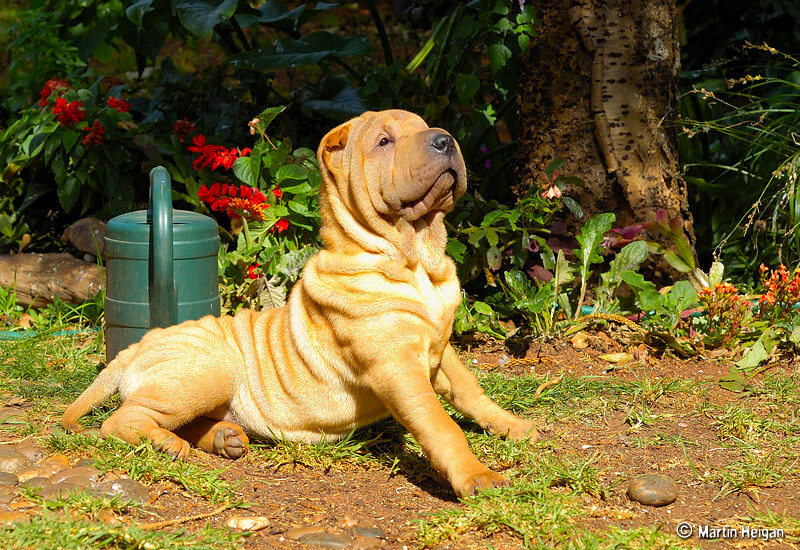If you're looking for a dog that turns heads and melts hearts, meet the Shar Pei. With its unmistakable wrinkles and loyal temperament, this ancient breed is both captivating and quirky. But Shar Peis are more than just looks—they're intelligent, independent, and deeply devoted to their humans.
🐾 Quick Breed Overview
- Origin: China (over 2,000 years ago!)
- Temperament: Loyal, reserved, protective
- Size: Medium (40–65 lbs)
- Lifespan: 8–12 years
- Best For: Experienced dog owners, calm households
Why Shar Peis Are So Special
There’s something almost noble about a Shar Pei’s presence. These dogs were originally bred for hunting and guarding, which explains their fierce loyalty and strong-willed nature. I once met a Shar Pei named Ming who would sit by the window every day at 5 PM, waiting for her person to come home—every single day for 9 years!
Wrinkle Care 101
The folds and rolls are adorable, but they do need a bit of maintenance to avoid skin issues like infections or yeast build-up. Here’s what works:
- Gently clean between wrinkles 2–3 times a week
- Use a hypoallergenic wipe or damp cloth
- Dry thoroughly—moisture can lead to irritation
- Consider a vet-approved wrinkle cream if needed
Feeding a Shar Pei
Shar Peis can be prone to food allergies, so a limited-ingredient or grain-free diet often works best. Look for quality proteins and avoid fillers like corn or soy.
Sample Feeding Guide:
- Puppies: 3 meals/day with balanced puppy formula
- Adults: 2 meals/day (adjust based on activity)
- Senior Dogs: May need fewer calories and joint support
🔗 Check out more healthy treats for dogs that are Shar Pei-safe!
Grooming Needs
Despite their plush look, Shar Peis don’t shed a ton—but they do need regular grooming:
- Brush once a week to remove loose hair
- Bathtime: Every 4–6 weeks (or as needed)
- Trim nails monthly
- Regular ear checks to prevent infections
Pro Tip: Use a gentle dog-specific shampoo, especially for their sensitive skin.
Training & Temperament Tips
Shar Peis are smart but stubborn. Early socialization and positive reinforcement are key. Avoid harsh training methods—this breed doesn’t respond well to force.
- Start obedience training by 8 weeks old
- Keep sessions short and positive
- Reward with affection or small treats
- Expose them to new people and pets gradually
I always say Shar Peis are “quiet guardians”—they don’t bark much, but when they do, it means something.
Common Health Concerns
Like many purebreds, Shar Peis have a few health quirks:
- Skin infections (especially in the folds)
- Entropion (eyelid rolls inward)
- Hip dysplasia
- Shar Pei Fever (fever + swelling in hocks)
Regular vet checkups and choosing a responsible breeder can help minimize risks.
Shar Pei at a Glance
- Exercise Needs: Moderate (daily walks + playtime)
- Trainability: Medium (needs consistency)
- Shedding: Low to moderate
- Good with Kids? Yes, with early socialization
- Good with Other Pets? Sometimes—early exposure helps
Final Thoughts
If you’re a calm, consistent pet parent with love to give and a bit of patience, the Shar Pei might be your perfect match. Their loyalty is unmatched, and once you’ve earned their trust, they’ll be your wrinkly shadow for life.
Want to learn more about breed-specific diets or gentle training methods? Browse our latest pet wellness articles.
Frequently Asked Questions (FAQs)
1. What is the Shar Pei known for?
2. Are Shar Peis good family dogs?
3. How often should I clean a Shar Pei’s wrinkles?
4. Do Shar Peis need a special diet?
5. Are Shar Peis easy to train?
6. How much exercise does a Shar Pei need?

About SniffnTail
SniffnTail is your go-to destination for everything pets. From helpful advice, tips, and insights to thoughtfully selected products and resources, we’re here to support pet owners at every stage of their journey. Whether you're caring for a playful pup, a wise old cat, or anything in between, SniffnTail offers tools and knowledge to make pet parenting easier and more joyful.
Related Articles
 Dog Breeds • 12-15 minutes
Dog Breeds • 12-15 minutesWest Highland White Terrier (Westie): Your Complete Care & Breed Guide
Unlock expert Westie dog facts, essential grooming secrets, effective training tips, health insights, and comprehensive puppy care. This ultimate West Highland White Terrier guide ensures every pet parent raises a happy, healthy companion. Get your Westie answers here!
 Dog Breeds • 6 min read
Dog Breeds • 6 min readBoxer Dog Breed Guide: Playful Guardians with Big Hearts
Explore the ultimate Boxer dog breed guide: history, personality traits, physical features, AKC standards, and tips for caring for these bouncy, lovable guardians.
 Dog Breeds • 5 mins Read
Dog Breeds • 5 mins ReadShih Tzus: A Complete Guide to Care, Grooming, Temperament, and Health
Shih Tzus are one of the most beloved toy breeds, known for their charming personalities and luxurious coats. Originally bred as royal companions in ancient China, these small dogs continue to win hearts worldwide. If you’re considering bringing a Shih Tzu into your life or already have one, understanding their unique needs is key to ensuring a happy and healthy life.

